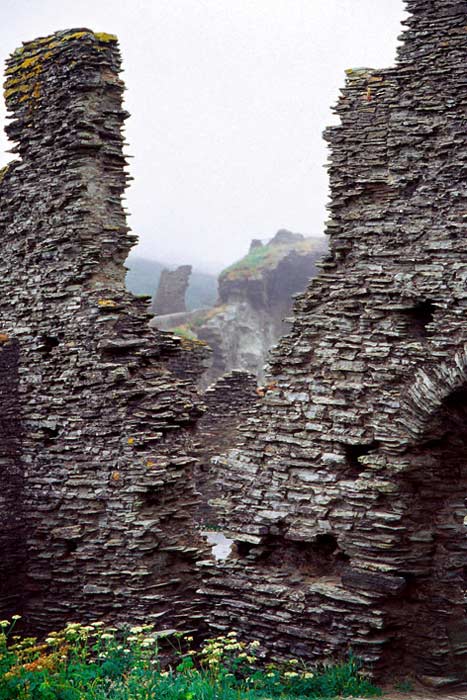https://www.ancient-origins.net/news-history-archaeology/archaeologists-may-have-discovered-birthplace-king-arthur-legends-come-life-020940
King Arthur. Detail. Charles Ernest Butler, 1903. ( Public Domain )
The discovery of 1500-year-old ruins at Tintagel in south-west England made headlines around the world. What appear to the be the walls of a Dark Age palace have been found in the exact place, and dating to the very time, King Arthur is said to have been born.

The ruins of the upper mainland courtyards of Tintagel Castle, Cornwall. ( Kerry Garratt/CC BY SA 2.0 )

Historical King Arthur
The Romans had ruled Britain for four centuries, and when they left in the fifth century the country fragmented into separate, feuding kingdoms, allowing the Anglo-Saxons to invade from their homeland in Germany.
From both archaeological discoveries and the few historical records that survive concerning the period, we know that the enemy was initially unstoppable, overrunning half the country. Then, in the 490s, something changed; the Britons mounted a massive counter-offensive and pushed the Anglo-Saxons back to the east. This abrupt change of affairs very much implies the emergence of a powerful, unifying British leader. The problem is that his or her name is not found in any contemporary text or inscription. The turmoil of the post-Roman era resulted in few written records surviving from the period.
However, someone must have led the Britons at this time, and the oldest extant account to reveal who this was is Nennius’ History of the Britons that tells us it was Arthur. Unfortunately, neither Nennius nor any other early writer reveals anything concerning Arthur’s background or where he was thought to have been born.
This post continues at: https://www.ancient-origins.net/news-history-archaeology/archaeologists-may-have-discovered-birthplace-king-arthur-legends-come-life-020940
Recommend this post and follow The birth of modern Man



No comments:
Post a Comment
Stick to the subject, NO religion, or Party politics